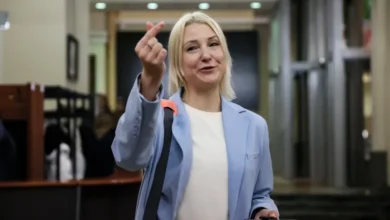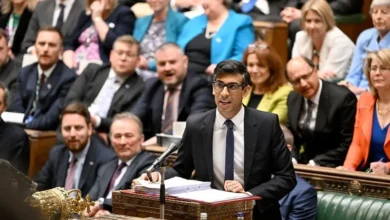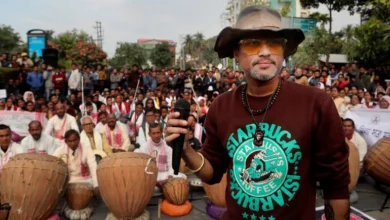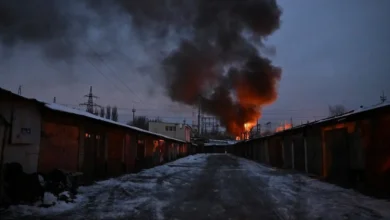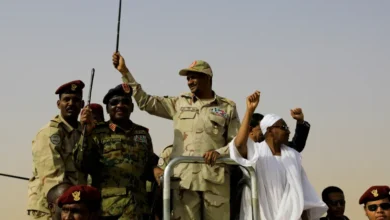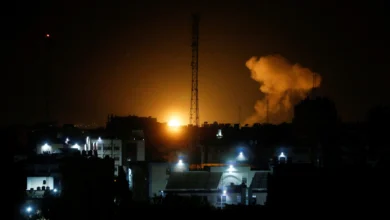The Aleppo electronic artists using music to heal in Gaziantep

Amr Helwani’s fingers swiftly moved the knobs of a DJ mixer up and down while coloured neon lights and white smoke began to swamp the tiled garden of the old Ottoman house where he had set up his console.
The 33-year-old DJ’s techno music energised partygoers on a cold late January night in Gaziantep, a city in southeastern Turkey on the border with Syria. Amr has been in the city since 2013. He, like many of those dancing, fled the Syrian war from Aleppo, less than a two-hour drive away.“We break the sound barrier tonight,” joked Amr, a tall, unassuming man dressed in a black T-shirt, referring to the deafening music. “But no, really, we’re simply trying to break down language and cultural barriers here. Turkish [people] and Syrians … we have very similar traditions but the language is different. Techno is all about the beats, not words. It makes it easier to dance together.”
Amr is one of the resident DJs of Room41, an itinerant techno and electronic music club started by a Syrian refugee that has entertained Gaziantep locals for years. It has also provided an outlet for Syrians to come together to let off steam and meet like-minded people passionate about music.
Little did Amr know, however, that January 28 would signal the last of his shows for a while. “See you all in two weeks!”, he said as he wrapped up the night at 3am.
Just a little more than a week later, catastrophic earthquakes struck southeastern Turkey and northwest Syria, changing the lives of Turks and Syrians forever. More than 50,000 people were killed. In Gaziantep, about 3,000 died, while thousands remain displaced. With continuous aftershocks for weeks and an entire city coping with the trauma of loss and devastation, the lights of Syrian techno nightlife switched off – just as they had during the war.“It’s scary how much it reminded us of the war days: The screams, the sorrow, the displacement… but we promised our audience that music would be back stronger than ever to cheer us up,” Amr said in May from Sakulta, a crowded café in central Gaziantep that sells tickets to Room41. His apartment was spared significant damage but he relocated temporarily further west to the Mediterranean city of Mersin to escape the stress of the constant aftershocks.Fleeing with cultural heritage
Since the beginning of the Syrian conflict in 2011, some 3.7 million refugees have settled in Turkey. The majority of them now live along its southeastern borders, geographically and culturally closer to the motherland.
From old 19th-century Ottoman houses with large domes and black-and-white striped horseshoe-shaped arches to the towering citadel in Gaziantep’s city centre – partly destroyed by the quakes – and narrow cobblestone streets filled with blacksmiths’ workshops and the food smells from eateries, many corners of the city conjure images of pre-war Aleppo for Syrians.
Today, more than half a million Syrians live in this city – a crossroads between Turkish, Kurdish and Arab cultures. Although more than a decade of Syrian presence has led to some friction, it has also reshaped the social and urban face of Gaziantep.Fleeing with cultural heritage
Since the beginning of the Syrian conflict in 2011, some 3.7 million refugees have settled in Turkey. The majority of them now live along its southeastern borders, geographically and culturally closer to the motherland.
From old 19th-century Ottoman houses with large domes and black-and-white striped horseshoe-shaped arches to the towering citadel in Gaziantep’s city centre – partly destroyed by the quakes – and narrow cobblestone streets filled with blacksmiths’ workshops and the food smells from eateries, many corners of the city conjure images of pre-war Aleppo for Syrians.
Today, more than half a million Syrians live in this city – a crossroads between Turkish, Kurdish and Arab cultures. Although more than a decade of Syrian presence has led to some friction, it has also reshaped the social and urban face of Gaziantep.
